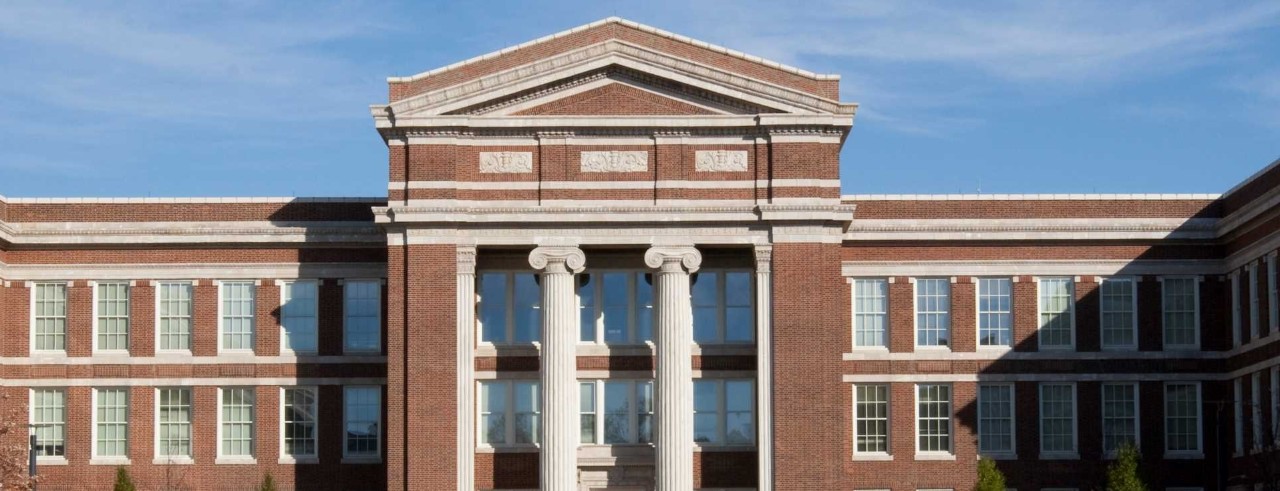
UC engineering students present research results to NASA
Undergraduate and graduate researchers share engine design for NASA project
A team from the University of Cincinnati’s Department of Aerospace Engineering and Engineering Mechanics presented research in August to make planes more fuel efficient during a forum at NASA’s Glenn Research Center.
UC student researchers, led by aerospace engineering professor Mark Turner, Ph.D., designed a propulsor system for potential use in hybrid electric aircraft. Turner, along with four undergraduate and seven graduate students, traveled to the Glenn Research Center in Cleveland, Ohio, to present their work to NASA engineers.
Turner and the student researchers were tasked by NASA to design the parts inside of a propulsor that could be used in a tail-mounted electric engine on an airplane. Eventually, NASA will test the design behind a fuselage and tail in a wind tunnel, Turner said.
The UC project is one part of NASA’s exploration of technology that could harness the benefits of “boundary layer ingestion” which has the potential to reduce fuel use, emissions and operating costs of aircraft. The idea is that future aircraft would have an electric engine located at the rear near the tail. The engine would ingest the slower moving air that builds up along the fuselage that causes drag. That slower moving air is then accelerated by the engine and sent out the back, ultimately reducing total drag on the aircraft. Reduced drag equates to reduced fuel usage.
“Mechanically, the boundary layer is tough to deal with,” Turner said.
The greater intensity of air coming into a rear-mounted engine (compared to the air flowing into conventional engines located under the wings of an airplane) from the boundary layer puts additional stress on the parts inside of the engine, which adds an additional challenge to engineering the design.
Turner, whose research focuses on the field of gas turbine simulation and design, has spent a decade guiding students on the creation of computer programs to design engines and simulate what happens when air passes through, as well as what mechanical loads the components can withstand. This isn’t his first collaboration with NASA; he has also worked with the U.S. Navy, the U.S. Air Force and several companies on turbomachinery design methods.
Turner recognizes the significance of his students – undergraduates in particular – working on a project with NASA. Students not only gained knowledge through applying engineering principles but also gained the soft skills that come along with a project of this caliber.
While working on the project for her summer co-op experience, Amanda Moores, an undergraduate aerospace engineering student, created and delivered a comprehensive presentation explaining Turner’s turbomachinery design tool with the goal of making the complex program more easily understood. In addition to gaining research and professional presentation skills, Moores appreciated the networking opportunity associated with working with NASA.
“I learned a lot from talking with the engineers and we got to hear about what else they have done for NASA while working there,” Moores said.
Justin Holder, an aerospace engineering graduate student, was responsible for determining whether or not proposed blade designs had the required structural integrity. The experience provided Holder’s first glimpse into the design review process and highlighted the importance of team communication in connecting all parts of a project, he said.
Featured image at top: Baldwin Hall. Photo/UC Creative Services
Related Stories
UC professor Ephraim Gutmark elected to National Academy of...
December 20, 2024
Ephraim Gutmark, distinguished professor of aerospace engineering at the University of Cincinnati, was elected to the 2024 class of the prestigious National Academy of Inventors.
UC students use 1819 Makerspace to build award-winning scoliosis...
December 18, 2024
Three University of Cincinnati students used the 1819 Ground Floor Makerspace to invent and test a groundbreaking treatment for pediatric scoliosis.
Chamberlain Group and the power of co-op
December 16, 2024
For two decades, the Chamberlain Group and UC have partnered on cooperative education experiences. Chamberlain Group, a global leader in intelligent access, provides hands-on experience for students in fields such as engineering, industrial design and communication design.
